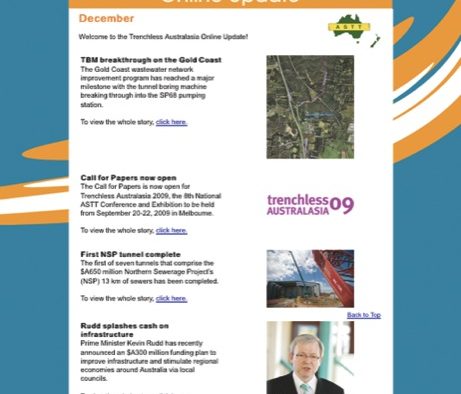Most associations recognise that an online newsletter is an excellent way of communicating quickly and cheaply with their members, while a print magazine is not only a highly valued member benefit, but an integral membership marketing tool. It is with this knowledge that many successful associations are combining the two forms of communication for maximum impact.
In a 2007 survey by Readex Research, 77 per cent of respondents agreed that print publications gave them a more favourable impression of an organisation. And with more than eight out of ten Australians reading at least one magazine frequently, association executives are reporting it is a medium that is very popular with members.
The CEO of Materials Australia, the association representing the interests of Australia’s materials scientists and engineers, Nick Koerbin, says the longevity of magazines is part of their appeal.
“We communicate with our members through a number of channels, namely emails, letters, website and face to face meetings. However, Materials Australia, our printed magazine, is acknowledged by our members as a real tangible benefit. The magazines tend to hang around for some time whereas emails and web information is constantly changing,” he says.
As well as being a great member benefit, association magazines also have an important role to play in membership marketing. With many associations sending their magazines to both members and non-members, they are able to publicise their activities and achievements, conferences and events to potential members.
“We know the magazine is shared amongst members and non-members so this gives us the opportunity to reach other markets in a very cost effective manner,” says Koerbin. “Yes, there are also real benefits with electronic communication, but we view our magazine as our primary marketing tool.”
The print magazine is also an essential element in building your association’s brand. A study by Millward and Brown found that a magazine increased brand loyalty by 32 per cent with 70 per cent of readers indicating they have taken at least one action in the last twelve months as a result of reading a custom magazine. The same study also found that more than a quarter of all readers pick up a magazine three or more times before they are finished with it.
Even though all workplaces are connected to the internet, associations are reporting that it is actually becoming increasingly difficult to access all members through email.
The President of the Australian Society of Association Executives and the Mathematical Association of Victoria, Simon Pryor, says emails frequently do not make it to their intended recipients.
“We have found that many of our members are locked behind corporate firewalls that block anything other than the most basic and innocuous email. So printed newsletters and professional magazines remain a vital element of the communication mix, since they are often the only way members get access to the detail of news and the latest technical developments in their profession,” he says.
Magazines are also generally viewed as the best communication tool for industries where employees spend a lot of their time out of the office.
Although the Australasian Society of Trenchless Technology (ASTT), the association representing companies and workers involved in the maintenance of underground assets and infrastructure, uses both print and online communication, the association’s Secretary Jeff Pace confesses he still prefers the hard copy magazine.
“I prefer a hard copy because it is easy to read in any location at any time, can be retained as a library reference magazine item and is much easier for locating past articles. It is also a great item to put out for visitors to just browse whilst waiting for appointments. I would not like to see the demise of hard copy print,” he says.
But there appears to be little chance of print publishing disappearing altogether.
Despite the proliferation of laptops and BlackBerries, the doomsayers who predicted the printed magazine and book would be replaced by the electronic have been proven wrong. And it is in much the same way that e-newsletters are widely believed to be a great accompaniment, but no substitute, for a hard copy magazine. The more regular contact of the e-newsletter serves to complement the print publication, providing frequent industry news and association updates to members between editions of the more in-depth magazine.
If you would like to discuss the online and print options for your association contact Zelda Tupicoff on 03 9248 5100 or email ztupicoff@gs-press.com.au

























































































































































